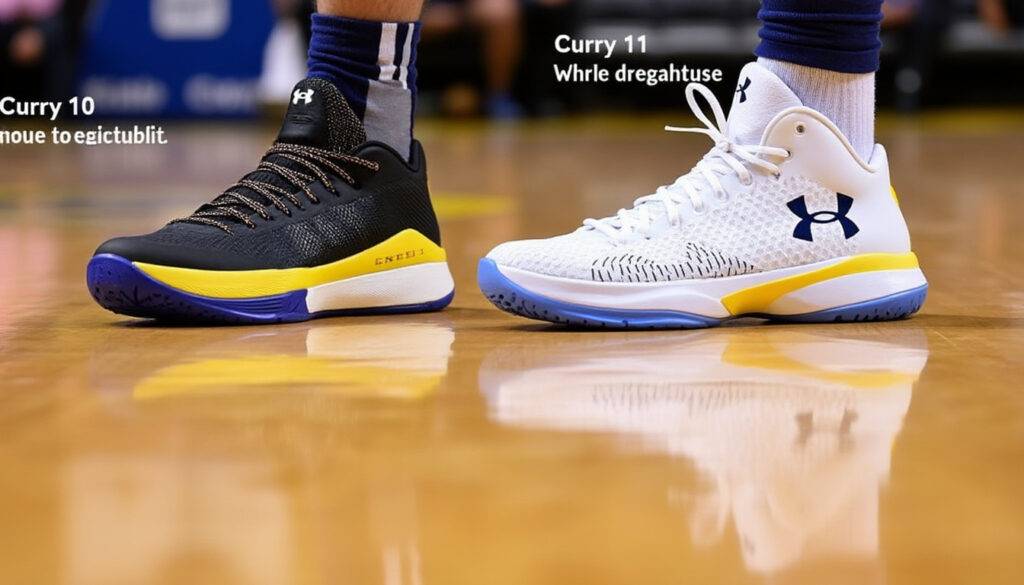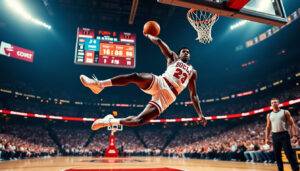Under Armour curry 11 vs curry 10: best heel stability for heavier basketball players in 2025?

As a former NBA pro who stomped through hundreds of practices and games, I’ll be blunt: heel stability isn’t a design detail — it’s the difference between staying on your feet and looking for physio. The debate between the Under Armour Curry 11 and the Curry 10 boils down to trade-offs: the 11 refines heel lockdown and comfort for agile players, while the 10 keeps a firmer, more rigid structure that many heavier players prefer. I’ll use lab numbers, on-court impressions, and practical tweaks to tell you which one truly holds up for heavier bodies in 2025.
- Quick takeaway: Curry 11 improves heel containment with a 3D TPU counter and wider heel, but has a softer outsole that limits outdoor durability.
- Heavies beware: If you play outside or need maximum torsional rigidity, the Curry 10 or other sturdier models may be better.
- Customization wins: Insoles and lacing strategies can turn either shoe into a more stable option for heavier players.
Next I break down the numbers, the feel, and the real-world verdict. Expect direct advice—no fluff.
Curry 11 vs Curry 10 heel stability for heavier basketball players — core specs that matter
Start with the parts that actually stop your ankle from collapsing: heel counter, midsole structure, torsional rigidity, and heel width. The Curry 11 and Curry 10 take different approaches.
- Curry 11: Features a 3D-molded TPU heel counter, a wider heel (about 96.0 mm), and a divided internal shank for controlled flexibility.
- Curry 10: Known for its torsional rigidity and a stiffer heel counter that historically offered excellent support and lockdown for heavier players.
- Why heel width matters: A wider heel base increases contact area and lateral stability—valuable if you weigh more and absorb more lateral forces.
For heavier players the Curry 11’s wider heel and rigid external TPU structure are persuasive improvements, but the shoe’s softer outsole and reduced torsional score make the 11 a compromise rather than a clear upgrade.
Insight: If you demand focused heel containment with better comfort, the Curry 11 is a significant step forward; if you demand uncompromising rigidity and outdoor robustness, the Curry 10 still has the edge.
Lab numbers and on-court feel: how Curry 11 and Curry 10 compare on heel support
Numbers don’t lie—but they need interpretation. The Curry 11’s lab profile gives a mixed signal: excellent heel containment and a stable base but a soft, wear-prone outsole.
- Heel stack: Curry 11 measured at 25.8 mm — slightly lower than average, which narrows vertical cushioning but improves court feel.
- Drop: A 6.2 mm drop means no dramatic change in step for players shifting from other low-top performance shoes.
- Midsole: Dual-density UA Flow with a nearly full-length divided shank offers shock absorption plus pop, but the softness numbers (durometer ~28–29 HA) are slightly firmer than average.
- Outsole hardness & wear: The Curry 11’s outsole durometer of ~58.4 HC is much softer than average, and wear testing showed a deep dent (~4.2 mm), indicating poor outdoor durability under heavy loads.
- Weight and fit: At roughly 12.0 oz (340g) the 11 is lighter than average, and the toebox/heel fit can feel snug — the 11 runs slightly small for some players.
On court the Curry 11 feels quick and surefooted. The TPU heel counter locks the Achilles and the wider heel gives a planted feeling during lateral pushes. But heavier players will notice the softer outsole compressing more over time and the lower stack offering less passive cushion under deep landings.
Insight: The Curry 11 delivers targeted heel lockdown and court feel, yet its softer outsole and modest heel stack reduce its margin of error for heavier players who repeatedly land hard.
Which should heavier players pick in 2025? Practical recommendations and alternatives
If you’re 220+ lbs and playing power-forward minutes or banging in the paint, your needs are clear: high torsional rigidity, durable rubber, a sturdy heel counter, and a midsole that resists bottoming out over long runs. If you’re a heavier guard who still values nimble movement, you can accept some compromises.
- Indoor-only, performance-first: Curry 11 is a solid choice for heavier guards seeking lockdown, light weight, and elite traction on clean courts.
- Heavy minutes, mixed surfaces: Stick closer to the Curry 10 or look at sturdier alternatives like the Nike GT Cut 3 or the Anta KT9, both of which emphasize structure and durability.
- Outdoor durability: The Curry 11’s soft outsole is a liability—choose shoes built with harder compounds from brands like Nike, Adidas, or New Balance.
- Models to test alongside Curry 11/10:
- Under Armour Curry 10 — firmer torsion and heel support.
- Nike GT Cut 3 — modern support for bigger players.
- Anta KT9 — options for wider, heavier feet.
- Puma Hali 1 — alternative low-top stability with different trade-offs.
- Under Armour Curry 10 — firmer torsion and heel support.
- Nike GT Cut 3 — modern support for bigger players.
- Anta KT9 — options for wider, heavier feet.
- Puma Hali 1 — alternative low-top stability with different trade-offs.
In short, if you live in gyms and care about traction and a locked heel, the Curry 11 is compelling. If you’re heavier and play outdoors or need a shoe that resists torsion and abuse, the Curry 10 or other brands like Jordan, Reebok, or Li-Ning may serve you better.
Insight: Match the shoe to your usage pattern: for controlled indoor court work pick the Curry 11; for brute-force durability and torsional rigidity, prioritize the Curry 10 or comparable models from other brands.
Practical tweaks to maximize heel stability in either Curry 11 or Curry 10
Real players don’t buy a shoe and pray. You modify it. Here’s a field-tested checklist I used in the league for heavier teammates like “Marcus,” a fictional 240-lb power wing who needed instant heel stability.
- Aftermarket heel insert: A denser heel wedge adds vertical resistance and reduces the feeling of bottoming out.
- Lacing strategy: Use a heel lock (surgeon’s knot or extra lace pass) to cinch the collar and eliminate micro-slips.
- Replace thin insoles: Swap the stock 3.7 mm insole for a thicker orthotic to increase heel stack and lockdown.
- Break-in plan: Gradually ramp play sessions and avoid outdoor scrimmages that accelerate outsole wear.
- Rotations: Don’t rely on one pair—rotate with a heavier, more rigid shoe for sessions that demand collision resistance.
Marcus tried a firmer insole and a heel lock in the Curry 11 and immediately reported fewer “ankle rolls” and a more confident landing. That’s the power of small mods.
Insight: With the right insert and lacing, the Curry 11’s strong heel counter and wider base can be converted into a reliable platform for heavier players on indoor courts.
How the Curry 11 compares to other brands and how that matters for heavier players
The market in 2025 gives heavier players options beyond Under Armour. Brands have different philosophies: Nike and Adidas lean into engineered rigidity and durable rubber; New Balance and Anta explore stability for wide feet; Puma and Reebok chase value-performance mixes.
- Nike often emphasizes firmer foams and structured TPU plates—see evolutions like the GT Cut series and signature models linked above.
- Adidas tends to use denser Boost-type or EnergyFoam blends that resist compression under heavy loads.
- Anta and New Balance now offer wider lasts and reinforced heels that suit heavier players’ biomechanical needs.
- Puma and Reebok present budget-friendly alternatives but watch midsole longevity.
Cross-referencing these design philosophies helps you pick a shoe that matches your weight, playstyle, and surfaces. If durability and torsional rigidity are non-negotiable, broaden your try-on list beyond Curry models.
Insight: The Curry 11 sits far right on the comfort and traction axis, but rivals from Nike and Adidas may outperform it on pure, repeatable structural support for heavier players.
Final operational advice: Try both models with the insole and lacing setup you plan to use in games. If you mostly play indoors on clean courts and need quickness with locked-in heel feel, the Curry 11 will likely suit you. If your minutes include heavy contact, outdoor sessions, or you feel the need for a firmer base, the Curry 10 or alternative models from Nike, Anta, or New Balance deserve your attention.
Common questions heavier players ask about Curry 11 vs Curry 10
Q: Will the Curry 11’s heel counter prevent ankle rolls for a 240+ lb player?
A: The 3D-molded TPU heel counter and wider heel greatly reduce lateral slippage and provide strong containment. For many heavier players it will curb ankle rolls, but combine it with a heel-lock lacing and a firmer insole for the best results.
Q: Is the Curry 11 suitable for outdoor play for heavier athletes?
A: No. The Curry 11’s outsole compound is very soft (~58.4 HC) and lab wear tests show deep abrasion. If you hoop outdoors regularly, prefer shoes with harder rubber or thicker, road-tested outsoles.
Q: Should I size up in the Curry 11 if I have wide feet and weigh more?
A: The Curry 11 fits slightly small for some. Try your usual size first; if toe-room or heel slippage is an issue, test a half-size up, and always try your game socks and any aftermarket insoles you plan to use.
Q: Which non-Under Armour models should heavy players try as alternatives?
A: Consider the Nike GT Cut 3, the Anta KT9, or tested options from Adidas and New Balance. These often prioritize stiffness and outsole durability better suited to heavier frames.
Q: Can lacing and insoles make the Curry 11 as stable as the Curry 10?
A: Proper lacing and a denser heel insole will significantly close the gap. The Curry 11’s heel architecture is robust; with the right mods, it can match or even surpass the 10 in perceived heel support on indoor courts.
